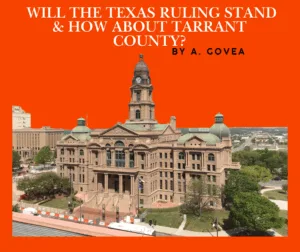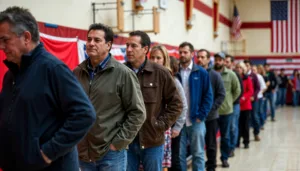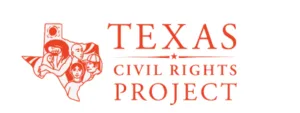Casi un millón de niños de 5 a 11 años han sido vacunados en Estados Unidos desde que fue aprobada la vacuna Pfizer-BioNTech para este grupo etario el pasado 20 de septiembre. Los esfuerzos por inmunizar a 28 millones de infantes en estas edades, podrían significar un punto de inflexión en la batalla para contener la pandemia de COVID-19, pero muchos padres aún se encuentran reacios a vacunar a sus hijos.
Por: Jenny Manrique, Ethnic Media Services
ENGLISH VERSION INCLUDED
“Recibimos llamadas telefónicas, correos electrónicos y mensajes de texto de familias que esperaban ansiosamente la vacuna para sus hijos”, dijo Jennifer Miller, pediatra de East Bay Pediatrics durante un panel convocado por Ethnic Media Services el 12 de noviembre. “Pero también tenemos otro grupo de pacientes que ha sido más cauteloso y vacilante”.
El primer grupo, dijo Miller, espera poder retomar algo parecido a la normalidad sin tener que preocuparse por aislar o tener en cuarentena a sus niños: poder enviarlos de nuevo a la escuela e ir de vacaciones juntos en familia.

Los segundos, que pertenecen en su mayoría a comunidades étnicas, tienen miedo de vacunar a sus hijos por desconocer las consecuencias a largo plazo, o porque han oído que causa efectos secundarios como la infertilidad (desmentido por los científicos) o la miocarditis (inflamación en el corazón que se ha presentado de manera excepcional en hombres después de la segunda dosis y que es muy fácil de tratar.)
Aunque muchos han aceptado vacunarse, en cuanto a sus hijos prefieren ver y esperar pues sienten que sobre ellos recae el peso de una decisión que los infantes son muy jóvenes para tomar.
La Dra. Miller citó los impactos en la salud mental que está viendo entre sus pacientes jóvenes como otra razón para asegurarse de que reciban las vacunas.
“No solo estamos lidiando con una pandemia debido a COVID, sino que estamos lidiando con una pandemia de salud mental”, dijo ella
Los niños y adolescentes han sido alejados de su rutina escolar, sus compañeros, sus deportes y sus clubes. Están deprimidos y ansiosos porque han perdido familiares a causa de COVID, están tristes.
“Estos niños necesitan regresar a la escuela a tiempo completo”, añadió la pediatra. “Tenemos niños de kindergarten que no aprendieron a leer y niños con necesidades especiales que no recibieron sus terapias ocupacionales”. Estas disparidades educativas ocurren mucho más
comúnmente en familias de ingresos bajos. “Si esas familias no salen y se vacunan, estos niños seguirán rezagados y no podrán competir con sus compañeros”.
Según los Centros para el Control y Prevención de Enfermedades (CDC en inglés), desde que comenzó la pandemia se han registrado más de 6 millones de casos de COVID positivos en niños en los Estados Unidos, que han provocado 64.000 hospitalizaciones y 650 muertes. Por eso la directora de los CDC, Rochelle Wollensky, avaló la recomendación del grupo asesor sobre prácticas de inmunización para darle paso a la vacunación masiva infantil.
“No hay duda de que los niños corren menos riesgo de contraer enfermedades graves por COVID”, dijo Monica Gandhi, profesora de la Facultad de Medicina de la Universidad de California en San Francisco. “Pero aunque el riesgo es menor, durante el aumento de la variante Delta, COVID fue la sexta causa principal de muerte en los niños”.
Gandhi citó tres razones por las que los niños deben ser vacunados: para protegerse del virus, para reducir la transmisión especialmente a padres mayores y abuelos; y porque la dosis aprobada es segura.
Esto cobra relevancia entre las comunidades étnicas por la mayor incidencia de diabetes, presión arterial alta y colesterol alto, que las hace más vulnerables al COVID.
“Durante el ensayo clínico con 2268 niños hubo una reducción de las infecciones sintomáticas por COVID del 90,7%.”, dijo Gandhi. En razón a los raros casos de miocarditis, la Administración de Alimentos y Medicamentos (FDA en inglés) autorizó a Pfizer suministrar una dosis de 10 mg para niños de 5 a 11, en contraste con los 30 mg que reciben los adultos. En el caso de Moderna la dosis es de 100 mg.
Gandhi sugiere que habrá una mayor eficacia en niños si las dosis se administran con un intervalo entre ellas mayor a tres semanas, basada en datos del Instituto Nacional de Salud Pública en Quebec: Canadá optó por administrar las dosis con ocho semanas de diferencia y tuvo una efectividad del 92% frente al 82% de protección que dan las dosis más seguidas.
“Todavía estamos en una tasa de vacunación de alrededor del 68% en todo el país entre los mayores de 12 años”, dijo Gandhi “28 millones de niños vacunados harán que el virus encuentren cada vez menos huéspedes susceptibles”.
Desinformación y miedos
Maria Meraz, fundadora y directora de Parent Engagement Academy, trabaja anualmente con alrededor de 3000 padres en los condados de Los Ángeles y Ventura, 90% de ellos inmigrantes y latinos de primera generación. Dijo que allí la desinformación que circula sobre la vacuna en redes como WhatsApp, Facebook, y Youtube es “terrible”.
“Las familias son de bajos ingresos y muchas de ellas no tienen acceso a la televisión por cable… obtienen su información de fuentes que no son las mejores como amigos y familiares”. Meraz trabaja con varios distritos escolares que brindan servicios de ayuda socioemocional para orientar a los padres en un dilema que les causa mucha ansiedad: si bien muchos no están de acuerdo con la vacunación, saben que no tienen otra opción.
“Tienen que enviar a sus hijos a la escuela porque tienen que ir a trabajar”, aseguró.
Madison Sandoval, una enfermera escolar del Área de la Bahía, citó un nuevo temor de que los niños que no han sido vacunados puedan terminar convirtiéndose en blanco de acoso cibernético.
Ahora no obstante hay un nuevo miedo pues los padres han visto mucho acoso cibernético e intimidación contra familias que no creen en las vacunas.
“Definitivamente puedo ver el potencial de que ocurra el acoso, y por eso creo que es realmente importante que las escuelas adelanten ese tipo de diálogo y se enfoquen realmente en el beneficio de las vacunas, sin culpar o avergonzar a ningún niño porque, en última instancia, no es su decisión” sostuvo Sandoval.
Sandoval recordó que el enmascaramiento y la ventilación son medidas realmente efectivas para prevenir la propagación del COVID al interior de las escuelas y que mientras las vacunas no sean obligatorias para asistir a las aulas, hay que seguir con ellas.

Vaccinating kids can help win the battle against COVID, experts argue
By: Jenny Manrique, Ethnic Media Services
Nearly one million children ages 5 to 11 have been vaccinated in the United States since the Pfizer-BioNTech vaccine was approved for this age group on September 20. Efforts to immunize 28 million infants could mark a turning point in the battle to contain the COVID-19 pandemic, but many parents are still reluctant to vaccinate their kids.
“We received phone calls, emails and text messages from families that were just eagerly awaiting the vaccine for their children,” said Jennifer Miller, a pediatrician with East Bay Pediatrics during an Ethnic Media Services briefing on Nov 12. “But we also have another group of patients who have been more cautious and more hesitant.”
The first group of families, Miller noted, were looking forward to resuming some semblance of normalcy without having to worry about isolating or quarantining their children: being able to send them back to school or traveling together as the holidays come.
The latter, mostly families of color, are afraid to vaccinate their children because they do not know the long-term consequences of the shot, or because they are afraid of side effects such as infertility (denied by scientists) or myocarditis (inflammation in the heart that has occurred exceptionally in men after the second dose and it is very easy to treat.)
Although many parents have been vaccinated, they prefer a wait-and-see approach when it comes to their children because they feel the burden of making decisions on behalf of people too young to decide for themselves.
Dr. Miller cites the mental health impacts she is seeing among her young patients as another reason for ensuring they get vaccines.
. “Not only are we dealing with a pandemic because of COVID, but we are dealing with a mental health pandemic,” she said. “Children and adolescents have been removed from their school routine, their peers, their sports and their clubs. They are depressed and anxious due to the loss of family members to COVID; they experience frequent sadness.
“These children need to get back into school full time,” the pediatrician added. “We have kindergarteners that didn’t learn how to read and kids with special needs who didn’t get their own occupational therapy.” These educational disparities occur much more commonly in families of color. “If those families do not go out and get vaccinated, these kids will continue to fall behind and won’t be able to compete with their peers.”
There have been more than 6 million positive COVID cases in children in the United States since the pandemic began, according to data from the Centers for Disease Control and Prevention (CDC), resulting in 64,000 hospitalizations and 650 deaths. That’s why CDC
Director Rochelle Wollensky endorsed the advisory group’s recommendation on immunization practices to move on mass childhood vaccination.
“There is no doubt that children are less at risk for severe disease from COVID,” said Monica Gandhi, Professor of Medicine at UC San Francisco School of Medicine. “Even though the risk is lower, during the Delta variant surge, COVID was the sixth leading cause of death in children.”
Gandhi cited three reasons why children should be vaccinated: to protect them against the virus; to reduce transmission to others, especially older parents and grandparents; and because thedoseissafe. Thesereasonsareparticularlyrelevantforcommunitiesofcolorwhichhavea higher incidence of diabetes, high blood pressure and high cholesterol, making them more vulnerable to COVID.
“During the (clinical) trial with 2,268 children, there was a reduction in COVID symptomatic infections of 90.7%.” Gandhi said. Because of the rare cases of myocarditis, the Food and Drug Administration (FDA) authorized Pfizer to provide a 10 mg dose for children ages 5 to 11, in contrast to the 30 mg that adults receive. In Moderna’s case, the dose is higher: 100 mg.
Gandhi suggests that there will be greater efficacy in children if the doses are given more than three weeks apart, based on data from the National Institute of Public Health in Quebec: Canada chose to administer the doses eight weeks apart which was 92% effective versus 82% effectiveness when the doses were given closer together.
“We are still at about 68% for the vaccination rate across the country among eligibles over 12 years of age,” Gandhi said. “With 28 million vaccinated children, the virus will be able to find fewer and fewer susceptible hosts.”
Misinformation and fears
Maria Meraz, Founder-Director of Parent Engagement Academy, works annually with around 3,000 parents in Los Angeles and Ventura counties, 90% of them immigrants and first-generation Latinos. She said that the misinformation spread about the vaccine on networks such as WhatsApp, Facebook, and YouTube is “terrible”.
“These parents are low-income families and many of them don’t have access to (cable) TV… they get their information from sources that are not the best such as friends and family.” Meraz works with several school districts that provide social-emotional support services to guide parents through a dilemma that causes them great anxiety: While many do not agree with vaccination, they know they have no other option.
“They have to send their children to school because they have to go to work,” Meraz said.
Madison Sandoval, a Bay Area school nurse, cited a new fear that children who have not been vaccinated may wind up becoming targets for cyberbullying. “I can definitely see the potential for bullying to happen, and that’s why it’s really important for schools to get ahead of that kind of dialogue and really focus on vaccines’ benefits, not assigning blame or shaming any child because ultimately it is not their decision,” Sandoval said.
Sandoval recalled that masking and ventilation are really effective measures to prevent the spread of COVID within schools and that as long as vaccines are not mandatory to attend classrooms, they should be implemented.






